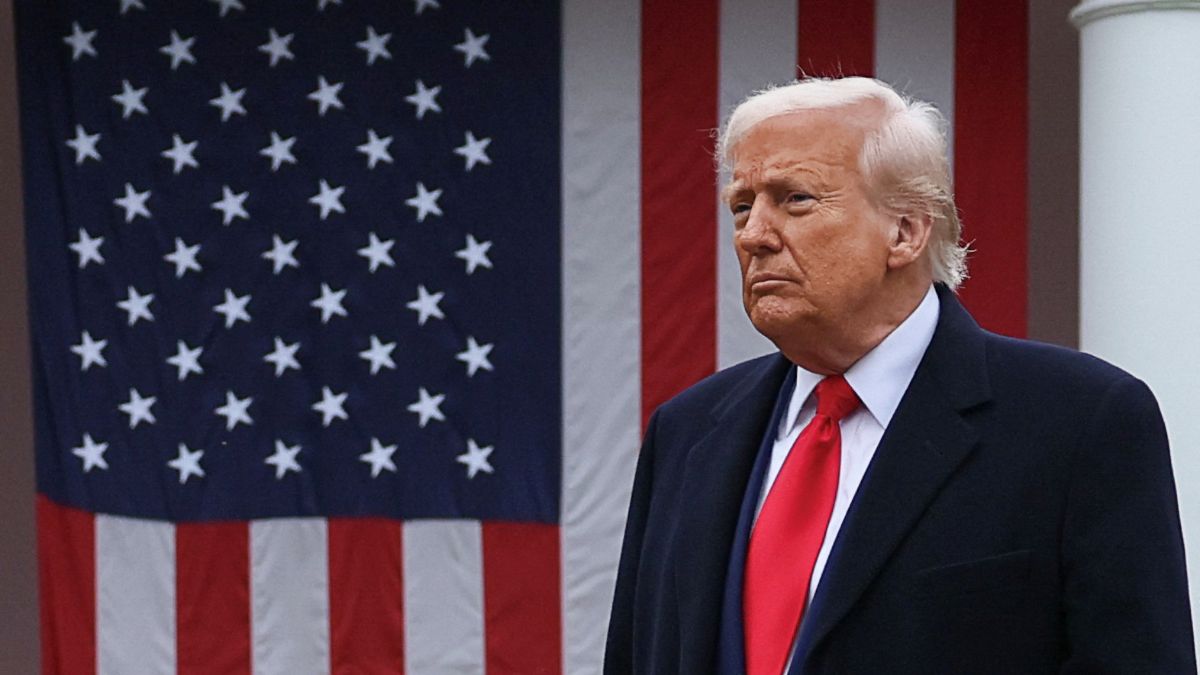With 25 per cent tariff on imports from India amid delay in the much-awaited bilateral trade agreement and the threat of further penalties over Indian imports from Russia, US President Donald Trump has posed a fresh challenge to burgeoning India-US trade ties, effectively creating an environment marked by scepticism and coercion that might undo years of progress in bilateral ties.
In a post on Truth Social, Trump on Wednesday announced a two-pronged assault on India.
Firstly, he used the trade deficit as a premise to slap 25 per cent tariff on India. Secondly, using the same language as Senator Lindsey Graham who has threatened to hit the Indian economy with a sledgehammer , he blamed India for funding the Russian war on Ukraine and threatened additional penalties.
India remains the largest buyer of Russian energy along with China “at a time when everyone wants Russia to stop the killing in Ukraine” and India will therefore pay a penalty starting August 1, said Trump.
At a time when India is facing an ever-growing Pakistan-China nexus, what India needs is a reliable partner in the Washington DC. Instead, with his actions, Trump has compromised decades of bipartisan efforts to improve the bilateral relationship and replace trust with suspicion and grudges.
Trump shakes foundations of India-US ties
Trump’s two-pronged assault on India is the starkest display of his irreverence to the principle of mutuality that has been one of the defining features of the India-US relationship. For decades, India respected US concerns and US presidents respected India’s red lines. Apparently, that tradition ended on January 20.
In his second term, Trump has crossed every red line that India has maintained for decades: he has meddled in the Kashmir dispute, hyphenated India and Pakistan, sided with the jihadists in India’s extended neighbourhood, and imposed tariffs and threatened secondary tariffs over the trade with Russia.
Impact Shorts
More ShortsALSO READ — Beyond Pakistan: Trump’s open embrace of jihadist forces across Asia a new headache for India
Unlike previous American administrations that pursued a mutually-beneficial relationship with India, there now exists a trust deficit in the bilateral relationship under President Trump as he does not care what India —or any other partner for that matter— wants and pursues a ‘my way or the highway’ approach, says Prof. Swasti Rao, who teaches geopolitics at the Jindal School of International Affairs, Jindal Global University.
“This is why he has ignored all the sensibilities of India whether it is the Kashmir issue, the India-Pakistan conflict, or the issue of agriculture and dairy in trade talks. He has complicated the India-US relationship that had been on an upward trajectory not just bilaterally but also multilaterally — look at the progress with Quad and IMEC in the past few years. Now, instead of taking the relationship forward, the focus will be on containing the fallout,” says Rao, who is also a Non-Resident Fellow at the Paris-based think tank Eastern Circles.
Trump takes India on a bumpy ride
Under the previous Joe Biden administration, US officials occasionally expressed concerns about India’s purchase of Russian oil and touched issues of human rights.
More often than not, those were acts of pandering to the domestic base that did little to slow the progress of the bilateral relationship.
Biden joined Prime Minister Narendra Modi to turn Quad into the fulcrum to counter China in the Indo-Pacific. He joined hands with India to float the India–Middle East–Europe Economic Corridor (IMEC) as an ambitious connectivity and geostrategic initiative. He brought India closer to Israel and the United Arab Emirates (UAE) under the I2U2 initiative. Bilaterally, the two countries expanded ties in security, intelligence, scientific, and defence industrial domains.
While Biden followed the trend set by Barack Obama, George W Bush, and Bill Clinton before him in taking forward the progress in bilateral ties, Trump has threatened to undo that progress by pulling India into a bumpy ride in the upcoming years — and tariffs are just one of the ways. Some of the blame lies with New Delhi as well.
“There has been a misreading of Trump in New Delhi. He was not the one-stop solution that many thought he would be. There is no easy way to manage him,” says Rao, the geopolitical expert at JISA.
What’s the road ahead for India-US ties?
India cannot replicate templates that other countries have followed to handle Trump.
India’s approach to international relations and standing in the world neither allows it to appease Trump by offering him military bases, natural resources, or the Nobel Prize or Nishan-e-Haidar like Pakistan nor pursue the 'Daddy' approach of Nato chief Mark Rutte . India will have to figure its own template.
“India has been non-confrontational so far and rightly so. The only way to steer the India-US relationship is to not be confrontational, manage President Trump’s ego, smoothen any wrinkles in the relations quietly, and stabilise other theatres like Pakistan and China. India, or any country for that matter, cannot manage many crises at once. India will likely need to come up with a lighter version of Mr Rutte’s approach where you don’t stoop too low but manage his ego just enough to get your interests secured,” says Rao, a consulting editor at The Print.
As for the tariffs, Rao says that nothing is certain with President Trump as he can still make a deal and negotiations are ongoing.
“The best-case scenario will be that India gets a trade deal and tariff comes down and India does not get any secondary tariffs or sanctions over the Russian war on Ukraine. The worst-case scenario will be that the 25 per cent tariff continues and India also gets exposed to secondary tariffs or sanctions under the Graham-Blumenthal proposal. In the short term, the focus should be to avoid this,” says Rao.


)

)
)
)
)
)
)
)
)



